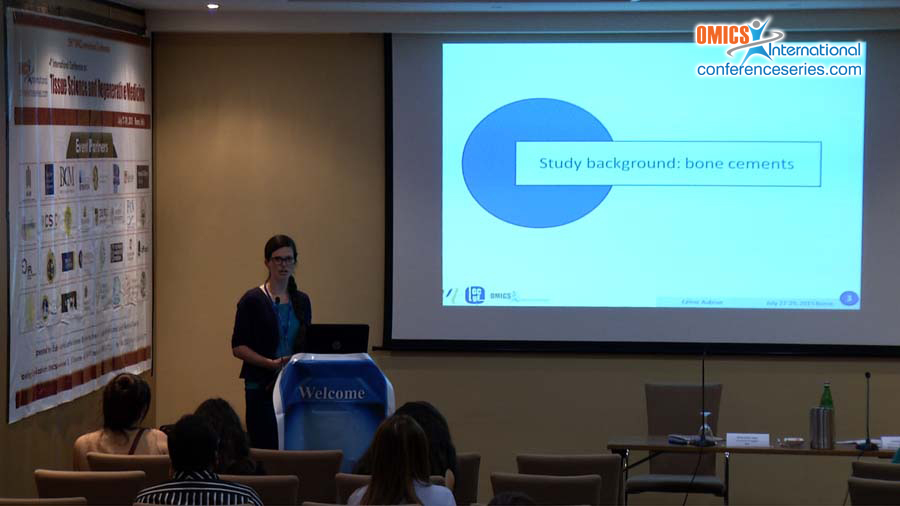
Celine Aubrun
Université d’Artois
France
Title: Bioceramic filler nature influence on acrylic cement properties after immersion in biological fluid.
Biography
Biography: Celine Aubrun
Abstract
Cements are used in bone surgery to fill gaps issue from pathology or traumatology. We classically distinguish calcium phosphate cements with hydraulic setting and acrylic cements with polymeric setting, mainly formulated with polymethylmethacrylate (PMMA) and possibly include a biocompatible inorganic filler. We studied a cement based on 2-hydroxyethylmethacrylate (HEMA), natural polysaccharides and a bioceramic filler (tricalcium phosphate or hemihydrated calcium sulphate, TCP and plaster, respectively) developed for its advantages: hydrophilicity, biodegradability and mechanical characteristics. It aims filling bone defects with analgesic and support functions. The main interest substituting HEMA to PMMA is due to an in situ quick water-uptake when contact with biological fluids. Induced swelling ensures gap total filling by preventing formation of fibrous tissue. However a deterioration of mechanical properties occurs. Our study so aimed improving formulation of cement in order to limit mechanical properties loss while maintaining its water-uptake ability. Two bioceramic fillers were compared. Studied curing parameters were temperature increase and setting time. Mechanical properties andwater-uptake were measured initially and after 21 days in simulated body fluid (SBF). The highest temperature ranges from 50°C to 80°C and setting time from 1min30s to 4min30s. We found that plaster significantly improved mechanical properties. After 21 days in SBF cement Young modulus was 13.6MPa for plaster and 1.4MPa for TCP (initially 470MPa and 362MPa, respectively), while maintaining equivalent water-uptake (32%). These results open the way to a cement formulation allowing curing parameters and in situbehavior improvement, so that we can consider its use as bone substitute.

